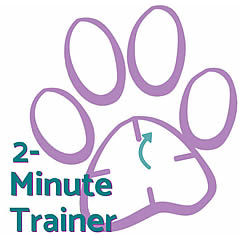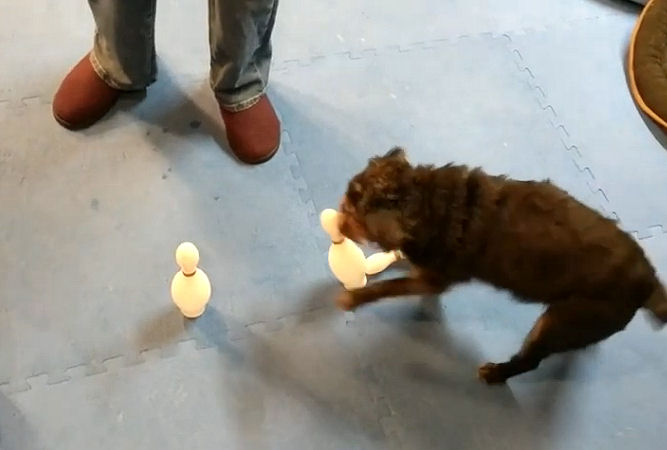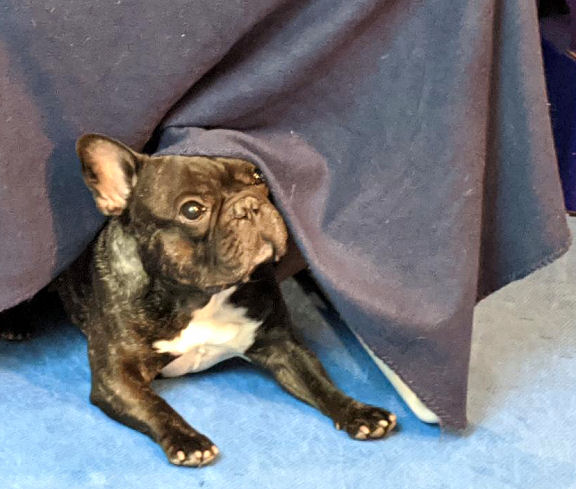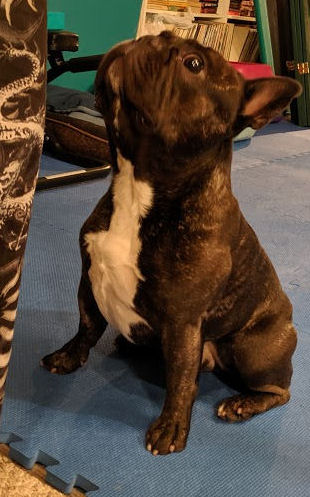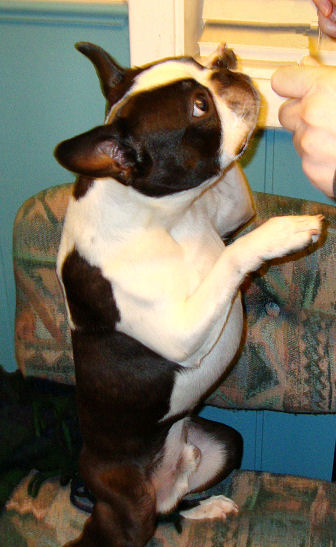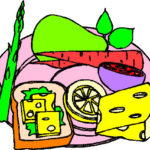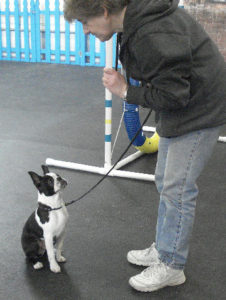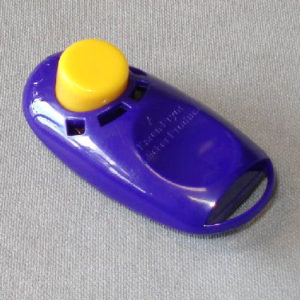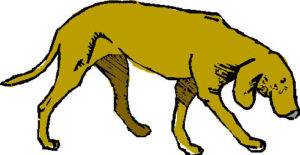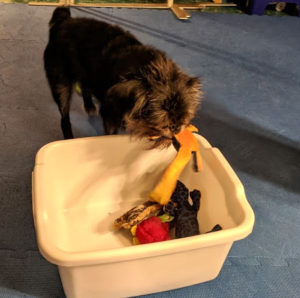In last week’s tip we talked about getting started with the Boxey game. Now it’s time to take it further and showcase your dog’s cleverness. Your dog can be creative with the right encouragement.
Remember that you’re never allowed to say “NO!” when you’re playing Boxey with your dog. Aside from biting or chewing the box, whatever your dog does with it is okay. If your dog is wildly creative and starts playing volleyball with the box, reward it, name it, and for pity’s sake get it on video so you can make a fortune.
Stop telling your dog what to do
The nice thing about playing Boxey is that you have no particular objective in mind. Most dog tricks or behaviors have an end goal. Our only goal here is to teach the dog that it’s okay to try different stuff. There are absolutely no negative consequences with this game. The worst that should happen is, if your dog absolutely intent on chewing the box, you call it quits for this session and try again later. Maybe with a different box, if that one’s too attractive for gnawing.
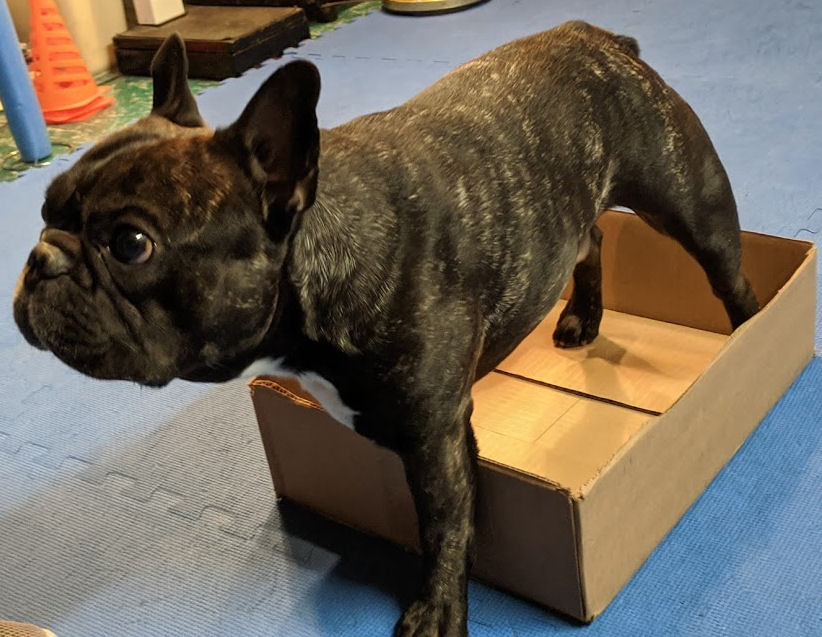
The possible actions that your dog may come up with to interact with the box include:
- Sniff it
- Nudge it
- Pawing at it
- Put a paw in it
- Put two paws in it
- Three paws in
- All four paws in
- Left paws in
- Right paws in
- Back paws in
- Backing into it
- Jumping over it
- Sitting in it
- Lying in it
- Turning it over
- Turning it on its side
- Putting something else in it
- Moving it
Hopefully you’re getting the idea that your dog can be creative with the box however it occurs to him.
Getting your dog out of the box
Once your dog figures out the box is his/her “sweet spot,” you may have some difficulty getting your dog to get out of the box. That’s one of the reasons we say to only reward the same behavior three to five times. If you keep delivering treats for your dog sitting in the box, you’ll never get him out.
Speaking of getting him/her out, dogs trained with positive reinforcement can cycle into what we’ve heard called feedback loops. They keep doing the same thing over and over, regardless of whether it’s being rewarded, because they can’t figure out what else to do. There needs to be a way to break the cycle.
One of the behaviors we use to settle our dogs down and get their minds back in the game is the hand touch. It’s a whole other game, which we’ll talk about in next week’s tip. In the meantime, if your dog is becoming box-obsessed, just pick it up and try again another time.
It may take some time
Most dogs spend so much of their lives getting directions from people that it’s hard for them to break away from that and think for themselves.
But thinking creatively is a great way to keep dogs (and people!) of any age interested and engaged. If you’re reading this tip, that means that you’re interested in giving your dog the best life possible – which means encouraging him or her to use every bit of brain power possible. Dogs are smart. Channel that ability into paths that will delight instead of getting into trouble. It’s better to have a dog that bats a box around than one that chews electrical cords out of boredom.
Some dogs are more creative than others. Among our own dogs, it’s the old guy, Tango, who comes up with the most creative ways to use Boxey. Torque is the least.
It’s more challenging to play Boxey with a less-creative dog because it requires you to be more patient and think more creatively yourself. As with Torque, if he can’t come up with anything new, we’ll take the initiative and present him with a new “look” – like putting the box on its end instead of its bottom. Or placing it on top of another box. Or hiding a treat underneath it.
Your dog can be creative. And so can you. Together you’ll come up with your own Boxey variations and your own shared repertoire of games.
